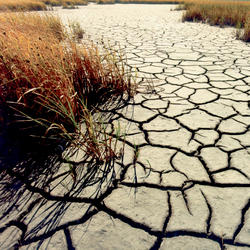National Water Census
National Water Census
Filter Total Items: 31
National Modeled Water Atlas
The National Modeled Water Atlas will deliver routinely updated water availability information in the United States.
Water Use
Through the Water Availability and Use Science Program, USGS will provide national information on withdrawal, conveyance, consumptive use, and return flow by water-use category at spatial and temporal resolutions important for risk-informed water management decisions. Water-use data provide a foundation for water managers to analyze trends over time, plan more strategically, identify, and...
Water Use in the United States
Water use estimates for 2000 through 2020 are now available for the three largest categories of use in the United States: self-supplied thermoelectric power generation, self-supplied irrigation, and public supply. Five additional categories of use (self-supplied industrial, domestic, mining, livestock, and aquaculture) will be available in 2025.
Understanding Water Availability
The United States faces growing challenges to its water supply, and we need to know where there is not enough water, where we have more than we need, and the quality of the water. The USGS is charged with understanding and reporting on water availability including influences on water supply (how much water and of what quality) and water demand (how much water do humans and ecosystems need).
Integrated Water Availability Assessments
The USGS Water Resources Mission Area is assessing how much water is available for human and ecological needs in the United States and identifying where and when the Nation may have challenges meeting its demand for water.
Drought Prediction Science
Drought is a prolonged and widespread deficit in available water supplies that creates multiple stressors across ecosystems and communities. The U.S. Geological Survey Water Mission Area conducts drought research and modeling to improve drought prediction capabilities. The research focus is on understanding the hydrological, ecological, and economic ramifications of drought. The modeling focus...
Integrated Water Science (IWS) Basins
The U.S. Geological Survey is integrating its water science programs to better address the Nation’s greatest water resource challenges. At the heart of this effort are plans to intensively study at least 10 Integrated Water Science (IWS) basins — medium-sized watersheds (10,000-20,000 square miles) and underlying aquifers — over the next decade. The IWS basins will represent a wide range of...
Principal Aquifers of the United States
This website compiles USGS resources and data related to principal aquifers including Aquifer Basics, principal aquifers maps and GIS data, and the National Aquifer Code Reference List.
Total Water Use
The USGS has estimated water use for the United States every 5 years since 1950. Estimates are provided for groundwater and surface-water sources, for fresh and saline water quality, and by sector or category of use. Estimates have been made at the State level since 1950, and at the county level since 1985. Water-use estimates by watershed were made from 1950 through 1995, first at the water...
Trends in Water Use
Total withdrawals for all categories of use in 2015 were estimated to be 322 billion gallons per day (Bgal/d), a level of withdrawal not reported since before 1970. Total withdrawals in 2015 were 9 percent less than in 2010, continuing a sharp but steady downward trend since 2005. Freshwater withdrawals were also 9 percent less than in 2015.
Surface-Water Use
Surface-water sources include streams and rivers, lakes and reservoirs, and oceans. For the purposes of the USGS water-use reports, surface water with less than 1,000 milligrams per liter (mg/L) of dissolved solids is considered freshwater, and the remainder is considered saline. Surface-water resources are often evaluated by watershed. The most recent USGS water-use estimates by watershed are in...
Groundwater Use
Groundwater refers to all subsurface water, specifically that part of groundwater which is in the saturated zone. Groundwater sources are called aquifers: geologic formations that contain sufficient saturated permeable material to yield significant quantities of water to wells and springs. For the purposes of the USGS water-use reports, groundwater with less than 1,000 milligrams per liter (mg/L)...













